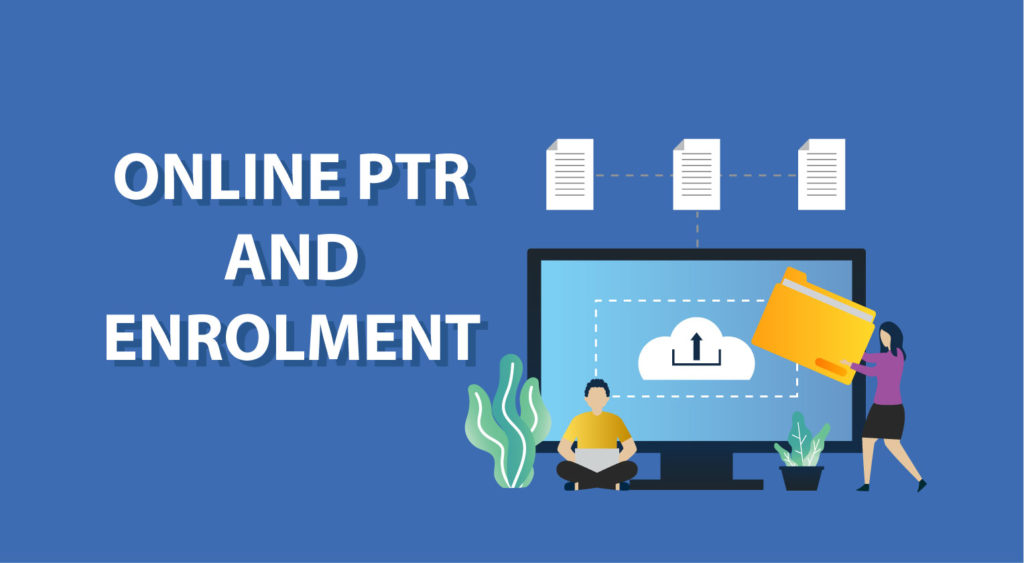
Managing the transition from a superseded qualification
Managing the transition from superseded training products can be a complicated and time-consuming process for RTOs. From time to time,

COVID-19 is having a major impact in our industry and with the situation changing on a daily basis, RTOs are being forced to consider drastic changes to their existing business processes to adapt and survive. Many providers are rapidly building online solutions to their training and assessment delivery, and regardless of how far the COVID-19 situation takes us, this is an opportunity for organisations that have traditionally relied on paper-based administrative processes to embrace technology and implement efficient web-based solutions into every aspect of their operations. In this article, we take a look at 5 contractual obligations that form part of the pre-training review and enrolment process and their requirements for online completion. These are:
The contract doesn’t prevent Training Providers from adopting online procedures when conducting pre-training reviews however your organisation must have a clear and documented business process about this in place. Don’t forget to update this process if you are now embedding online procedures to your pre-training review for the first time. LLN skills must be taken into account but remember that the Department doesn’t mandate a formal LLN quiz and doesn’t prescribe a particular tool that providers must use to assess LLN skills as part of the pre-training review. Web based tools such as LLN Robot or even an interactive PDF document could be used to capture LLN skills remotely. If your organisation is planning on implementing online engagement requirements, then consideration of digital literacy skills must become part of your normal pre-training review process. If you choose not to conduct a formal online test, then you may take into account other types of information as part of considering LLN skills such as secondary school results, courses previously completed by the individual with your organisation, speaking and listening skills of the individual determined throughout a discussion/interview with them and the ability of the individual to navigate an application process to read instructions and complete questions.
Training Providers must document the outcome of the pre-training review including why they determined the course or qualification each student enrolled in was a suitable and appropriate training option for that individual with reference to the information obtained through consideration of the items in Clause 5.1 of Schedule 1. You may use the Department’s pre-training review template to document your judgements or your own documentation, provided that it takes into consideration all the required items. Your documented pre-training review process must outline your  procedure for obtaining information related to these items. This doesn’t have to be a paper-based procedure and doesn’t require the individual’s physical presence to be completed. Online solutions for obtaining the required information are already in use by some training providers and include virtual interviews/discussions using video conferencing software such as Zoom or Google Hangouts and can even be recorded for evidence (make sure you have permission to record). Questionnaires integrated into an online registration/expression of interest form and softcopies or online questionnaires sent via email or through an SMS/CRM system can also be used. The information collected doesn’t necessarily have to be documented. For instance, an organisation may collect required information such as career goals, relevant aspirations, personal circumstances etc. while conducting a virtual interview with the candidate, which can be retained in video or audio file format as supportive evidence of their pre-training review outcome. Regardless of a pandemic or not, the Department doesn’t mandate a face to face pre-training review process and the Skills First Contract doesn’t require an individual to digitally endorse any documents as part of an online pre-training review. This falls to your organisation’s formal (and documented) processes.
procedure for obtaining information related to these items. This doesn’t have to be a paper-based procedure and doesn’t require the individual’s physical presence to be completed. Online solutions for obtaining the required information are already in use by some training providers and include virtual interviews/discussions using video conferencing software such as Zoom or Google Hangouts and can even be recorded for evidence (make sure you have permission to record). Questionnaires integrated into an online registration/expression of interest form and softcopies or online questionnaires sent via email or through an SMS/CRM system can also be used. The information collected doesn’t necessarily have to be documented. For instance, an organisation may collect required information such as career goals, relevant aspirations, personal circumstances etc. while conducting a virtual interview with the candidate, which can be retained in video or audio file format as supportive evidence of their pre-training review outcome. Regardless of a pandemic or not, the Department doesn’t mandate a face to face pre-training review process and the Skills First Contract doesn’t require an individual to digitally endorse any documents as part of an online pre-training review. This falls to your organisation’s formal (and documented) processes.
Clause 2.14 of the 2020 Guidelines about Determining Student Eligibility and Supporting Evidence outlines the requirements for electronic completion of the Evidence of Eligibility and Student Declaration form. The information collected must be exactly the same as it would if a hard copy form had been used. The online form requires digital endorsement of both the individual and the RTO delegate. For further discussion on what constitutes a digital endorsement, check out our article on electronic signatures.
Although the electronic completion of the form sounds like a straightforward process, sighting and retaining evidence of eligibility remotely is a complicated practice. As per the eligibility guidelines, original hardcopy documents must be presented by individuals in person. However certified copies of original documents can be posted to the RTO and this could be an option when determining eligibility remotely. The most efficient solution available is the use of the Document Verification Service which can be implemented more easily by those RTOs that already have an online enrolment process in place. The Document Verification Service (DVS) is a national online system that allows organisations to compare an individual’s identifying information with a government record. It requires the engagement of a fully operational Gateway Service Provider and this service comes with a cost as Gateway Service Providers are charged by the Government on annual transaction volumes. These organisations are authorised to direct information match requests to and from the Commonwealth Government’s Document Verification Service. The Gateway Service Provider will provide your organisation with an administrative platform to manage the process of connecting students to the DVS. This can include integrating use of the DVS into an online enrolment form. When using the DVS, you don’t have to sight original documents and retain any copies in hardcopy or electronic format. Hardcopy evidence is not required to be kept nor are printouts from your online administrative platform. An online transaction record, confirming that the student details have been verified, can be retained within the platform and presented to auditors in electronic format.
Certified copies of original documents can be posted to the RTO when determining an individual’s eligibility for subsidised training but not for the purpose of checking eligibility for concession. On the other hand, when sighting hardcopy evidence of concession, you must sight the original document in person and retain a photocopy or electronic copy, clearly indicating the date upon which it was sighted or sight digital concession card presented through the Centrelink Express Plus mobile application, declare in writing that the digital concession card has been sighted and attach this declaration to the student’s file.
If you decide to move into a fully online enrolment model, then there are two options for remote checking of an eligible individual’s eligibility for concession. You can either use the Document Verification Service in the same way it can be used for sighting and retaining evidence of eligibility or you can use the Centrelink Confirmation eServices for businesses. The second option will require your organisation to retain an extract from this online service which displays the date upon which the extract was made, the document number of the concession card and the name of the concession holder.
As referenced in the 2020 Guidelines about Fees, training providers may provide the individual with the required Statement of Fees electronically. The electronic version of the Statement of Fees must contain all the information described in clause 1.3 of the 2020 Guidelines about Fees. The electronic record created for the above purpose, must confirm that a Statement of Fees was generated indeed for each eligible individual and must also be in a format that could be audited. Your Student Management System should have the capability of generating and emailing as an attachment, a Statement of Fees to your students, a date stamped record of this email in your Student Management System should be sufficient evidence for audit.
The training plan may also be in electronic format as outlined in clause 7.5 of Schedule 1 and must include all the information listed under clause 7.2 of the same schedule. Digital endorsement by the student and the employer (and, in the case of school-based Apprentices/Trainees by the school’s representative) is required only for traineeship/apprenticeship enrolments. Again, your Student Management System should have functionalities that allow emailing students their Training Plans in electronic file format and providing audit logs demonstrating compliance with the contract requirements. For digital signatures, you could implement a web based system such as Adobe Document Cloud or HelloSign.
Most Student Management Systems come with an option for completion of web-based enrolments. When building your online enrolment form, remember to include all of the mandatory standard enrolment questions as specified in the Victorian VET Student Statistical Collection Guidelines, the NCVER and Victorian Student Enrolment Notice and your own Student Enrolment Privacy Notice, describing how your training organisation collects and handles student data following enrolment. Appropriate electronic confirmation should be obtained from the student to ensure that the details provided are correct and that the student has acknowledged the Student Enrolment Privacy Notices. Electronic endorsement is required by the student and the parent/guardian for all students under the age of 18.
More information about the use of electronic signatures with respect to the contract can be found in the Department’s relevant fact sheet which RTO Logic has summarised in a previous article.
If you would like to discuss how your organisation can move to a completely online PTR and enrolment process, get in touch with us today.

Managing the transition from superseded training products can be a complicated and time-consuming process for RTOs. From time to time,

According to the Audit and Assurance Findings Report by the Department of Education, Evidence of Participation (EOP) made the top 5 most common issues identified at audit. Make sure you’re on top of your EOP obligations!

The 2023 Victorian VET Funding Contract came with significant changes to the eligibility settings. In this article, we cover the 2023 changes relating to the Skills First eligibility requirements and evidence retention.

In an effort “to increase the ability of Victorians to reskill and to continue to participate in an evolving economy”,

Not all Skills First funded training conducted in the workplace translates into an apprenticeship/traineeship enrolment. It is common for Training

At least once every month, training providers are required to successfully upload their training activity data for the current data collection year to SVTS. Training providers should check the Validation Outcomes report after every upload and must ensure that any data errors are rectified before re-uploading to SVTS.

